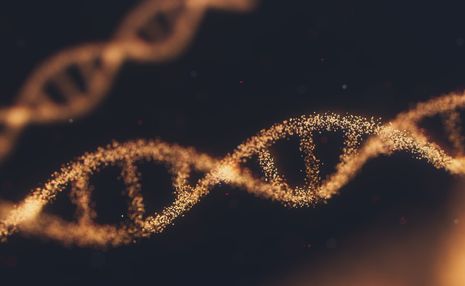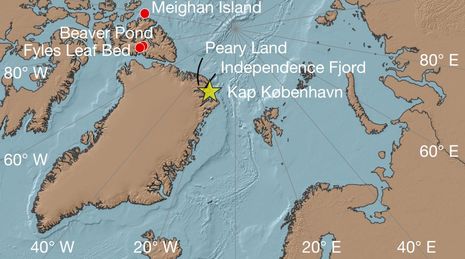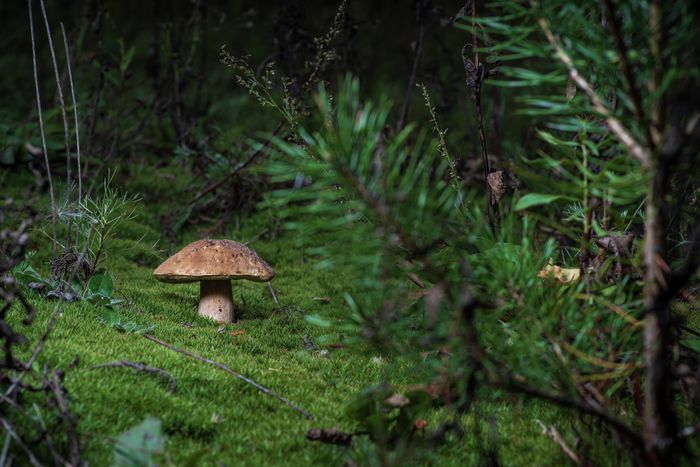Oldest DNA ever discovered reveals two million years worth of lost secrets
Katie Jeans sits down with Cambridge’s Bianca de Sanctis to find out what it’s like to find yourself at the centre of a ground-breaking discovery

The University of Cambridge has a strong academic history, with many scientific breakthroughs to its name. For many of us, the thought of discovering something truly groundbreaking seems either impossible or too far in the future to even begin to imagine. However, for Cambridge student Bianca de Sanctis, a background in mathematics and statistics has rather unexpectedly led her to become involved with a project that has turned the world of evolutionary biology on its head, even before finishing her doctoral studies.
De Sanctis was approached by researchers who were working on a project at the København Formation in Greenland. They had gathered fragments of environmental DNA (eDNA), which were potentially up to two million years old, and needed De Sanctis' help to analyse the DNA sequence in order to unlock secrets of the prehistoric world.
She was ‘amazed’ at the quality of data obtained from the sequenced ancient eDNA that was only thousanths of a millimetre in length. But what made it even more remarkable was that this DNA had been sourced from the environment, surviving the harsh natural elements as well as potential damage and contamination by the plethora of life that swarmed the landscape subsequently.
“These trophies of success are a testament to the hard work that went into this project”
This welcome surprise meant that de Sanctis could map the results onto extensive libraries of DNA from thousands of different organisms, giving a unique window into the ancient ecosystem that allowed her to determine the species present at this site two million years ago. She correctly identified the presence of hares, the extinct mastodon, and ancestors of geese and reindeer to name a few, painting a picture of a beautifully diverse landscape.
When it came to dating the DNA, de Sanctis used the ‘molecular clock’ technique, estimating the relative evolutionary divergence times of species by studying the accumulation of neutral mutations in the genome.
The redundant nature of DNA means that in much of the genome, random changes in the sequence that accumulate overtime do not affect the ability of an organism to survive and thus are independent of natural selection. Therefore, the assumption that the rate of acquisition of DNA mutations is on average constant over a long period forms the basis for ‘molecular clock’ dating. The results from this must be calibrated against fossil records with known age as the method doesn’t give absolute times.
The outcome was exciting, firstly because the modest eDNA fragment that she had been presented with was indeed over 2 million years old as suspected. De Sanctis had just helped to analyse an eDNA fragment that is the oldest ever to have been discovered.

While this may seem like the culmination of a very fortunate series of events, it was of course not such an easy journey in reality. This was a 16-year study involving many failures in extracting eDNA fragments from the sediment, so much so the site adopted the name the ‘curse of the København formation’.
However, the adsorption of genetic code to sediment may not be the curse that the team viewed it as, in fact perhaps more of a blessing. New research has suggested that in this way, DNA structure becomes modified and as a result less well recognised by degradation enzymes, helping the preservation process.
In a similar vein to the tribulations involved in purifying the DNA fragments, de Sanctis herself also experienced setbacks. She spent three months working hard on the project and after the first round of peer review, as frequently happens in the scientific publishing world, changes had to be made before her work could be accepted. She was asked to use a program called Bayesian Evolutionary Analysis by Sampling, which is given the rather fierce acronym of BEAST, to re-analyse her data and now faced with another three months of hard work, de Sanctis had to quickly get to grips with this complicated new software.
Fortunately, the new set of results she obtained matched the conclusions she had previously drawn and the submitted paper was accepted into the prestigious journal Nature, as well as being covered by several popular news outlets all over the world. These trophies of success are a testament to the hard work that went into this project.
When asked about why this discovery is so important, de Sanctis says it is exciting that ‘it can be done’. Now we know that it’s possible to accurately sequence eDNA of such great age in such small quantities, and to date it accurately. We know it is possible to use these techniques to identify the range of species present within a window of ancient time, despite the genetic ‘soup’ that is inevitably present from subsequent years of biological activity at the site.
The future is exciting – we are finally putting together the puzzle that is the ancient biological world, finding and slotting in lost pieces along the way. With the help of people like Bianca, we are building an evolutionary tree more complicated and intricate than ever before.
 News / CUP announces funding scheme for under-represented academics19 December 2025
News / CUP announces funding scheme for under-represented academics19 December 2025 News / Cambridge welcomes UK rejoining the Erasmus scheme20 December 2025
News / Cambridge welcomes UK rejoining the Erasmus scheme20 December 2025 News / SU reluctantly registers controversial women’s soc18 December 2025
News / SU reluctantly registers controversial women’s soc18 December 2025 Film & TV / Timothée Chalamet and the era-fication of film marketing21 December 2025
Film & TV / Timothée Chalamet and the era-fication of film marketing21 December 2025 News / News in Brief: humanoid chatbots, holiday specials, and harmonious scholarships21 December 2025
News / News in Brief: humanoid chatbots, holiday specials, and harmonious scholarships21 December 2025









